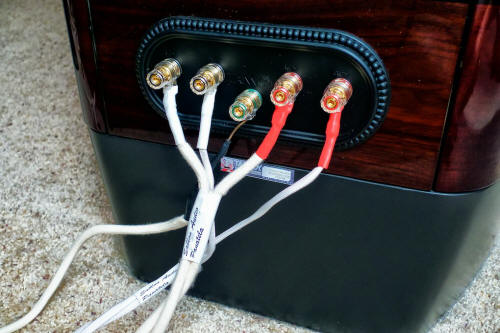watchnerd
Grand Contributor
I just recently discovered that some speakers have ground terminals, something I've never seen before despite being in the hobby for decades.
It seems like it shows up on some Tannoys and a few other brands.



Apparently you're supposed to hook the ground wire back to your amp.
What's going on here?
What problem is this solving?
Is it specific to high efficiency speakers and/or tube amps?
It seems like it shows up on some Tannoys and a few other brands.



Apparently you're supposed to hook the ground wire back to your amp.
What's going on here?
What problem is this solving?
Is it specific to high efficiency speakers and/or tube amps?
